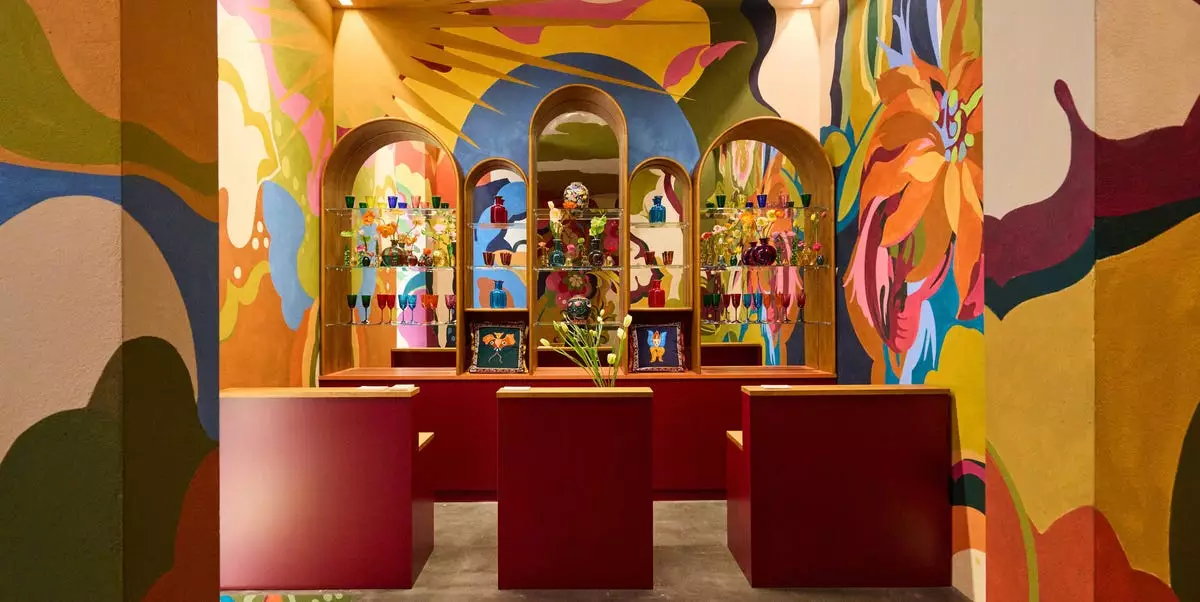At the forefront of Milan’s Salone del Mobile, Loewe emerges not just as a brand but as a cultural curator, blending artistry with everyday objects. This year, the Spanish fashion house invited an impressive collective of 25 artists, designers, and architects to reinterpret the humble teapot—a quintessential emblem of social gatherings and comfort. Under the direction of newly appointed creative duo Jack McCollough and Lazaro Hernandez, the initiative seeks to redefine the cultural associations surrounding tea-drinking rituals.
By inviting notable figures like Edmund de Waal and David Chipperfield to contribute, Loewe allows for a dialogue that stretches across various artistic realms, from abstract to hyper-realistic interpretations. The results are inventive pieces that provoke conversation about craftsmanship, cultural heritage, and the global appreciation of tea, intended for both aesthetic enjoyment and practical use. Loewe’s accompanying homewares collection, which includes coasters and leather charms, further emphasizes this blend of artistry and functionality, effectively positioning tea as a focal point for social connection in contemporary design.
Infrastructure and Imagination with Prada Frames
Prada’s annual symposium, “Prada Frames,” takes place amidst a backdrop that is as much a part of the discourse as the ideas shared within it. This year, themed “In Transit,” the discussions navigate the often-overlooked infrastructure that facilitates human movement and the exchange of ideas. Historic locales such as Arlecchino, an elegant train embodying mid-century chic, juxtapose the nuances of the past with contemporary thought. Similarly, the Padiglione Reale provides a glimpse into a time when waiting for a train was surrounded by royal grandeur, painting a picture of modernity grounded in tradition.
Through engaging dialogues featuring innovators and thinkers, Prada pushes the boundaries of traditional design symposiums, encouraging participants and attendees alike to consider how infrastructure shapes our daily lives and cultural narratives. The conversations that blossom here serve as a reflection on the built environment—reminding us that design extends beyond mere aesthetics to the very systems that support our societies.
Louis Vuitton’s Luxurious Home Collections
The opulence of Louis Vuitton shines through with the launch of its Home Collections at Milan’s opulent Palazzo Serbelloni. This bold venture not only showcases exquisite furniture and lighting but also nods to the brand’s playful side with unexpected additions like a Pharrell-inspired pinball machine. Delving deeper into the realm of home, Louis Vuitton capitalizes on its heritage of luxury while seamlessly integrating contemporary design ethos.
By expanding upon the beloved Objets Nomades line, the brand encourages new interpretations of home life—each piece tells a story as unique as its creator, integrating comfort, style, and identity. Visitors to the Palazzo are treated to a curated experience that transcends shopping, transforming into a journey through artistic expression and fine craftsmanship.
La DoubleJ’s Energetic New Headquarters
Celebrating an impressive ten years in the industry, La DoubleJ is reinventing its identity with the launch of the “LDJ Starquarters.” Nestled in Milan’s Navigli district, this five-story headquarters serves not just as a business location but as a holistic space that fosters creativity and community. With activities designed to harness positive energy, including tarot readings and sound healing sessions at the rooftop Gong Temple, La DoubleJ invites its audience to engage in an immersive brand experience.
Furthermore, the release of fresh iterations of the Napoli Rosa homeware collection aligns perfectly with the brand’s ethos. La DoubleJ understands that design should inspire joy and connection, evolving its narrative to include interactive events that weave together the threads of fashion, well-being, and community engagement.
Miu Miu’s Celebratory Literary Pursuit
With the prospect of intellectual exploration, Miu Miu’s Literary Club dives into the experience of girlhood and love through the lens of seminal works by Simone de Beauvoir and Fumiko Enchi. Their latest program, “A Woman’s Education,” promises to resonate deeply with audiences, spotlighting the power of literature to shape identity.
Through performances and talks featuring contemporary female authors like Lauren Elkin and Naoise Dolan, the event transcends the traditional book club. It becomes a platform for empowerment and creativity, illustrating how art and literature continue to challenge societal norms and expectations. Miu Miu successfully curates a space where imagination meets intellect, championing the critical voices of women in an era demanding inclusivity and representation.
Gucci’s Bamboo Journey
Gucci’s exhibit “Bamboo Encounters,” hosted at the Chiostri di San Simpliciano, serves as a tribute to the brand’s rich heritage. Curated by architect Ippolito Pestellini Laparelli, the show explores Japan’s bamboo culture and its deep roots in Gucci’s identity. By presenting sculptures, bamboo baskets, and interactive installations, Gucci emphasizes the material’s versatility while fostering appreciation for craftsmanship.
This exhibition is a reminder that luxury is not solely defined by opulence but also by the stories woven into the very fabric of objects. By rooting itself in a cross-cultural dialogue, Gucci positions itself at the confluence of tradition and contemporary artistry, reaffirming its commitment to innovation within the realms of design.
Kartell’s Tribute to Timeless Design
Kartell’s flagship store unveils a retrospective marking the 25th anniversary of its memento of lighting design. Here, iconic pieces meet new interpretations, including the reissue of Joe Colombo’s 1964 KD28 lamp. This celebration of Kartell’s rich history serves as a testament to Italian design excellence, merging nostalgia with forward-thinking innovation.
Simultaneously, the Kartell Museum offers a peek into the visionary work of Joe Colombo, showcasing how his designs have influenced modern aesthetics and functionalism. Kartell’s steadfast dedication to redefining contemporary living through clever design solutions remains evident, as it continues to celebrate its past while innovating for the future, demonstrating that true design is both timeless and transformational.

